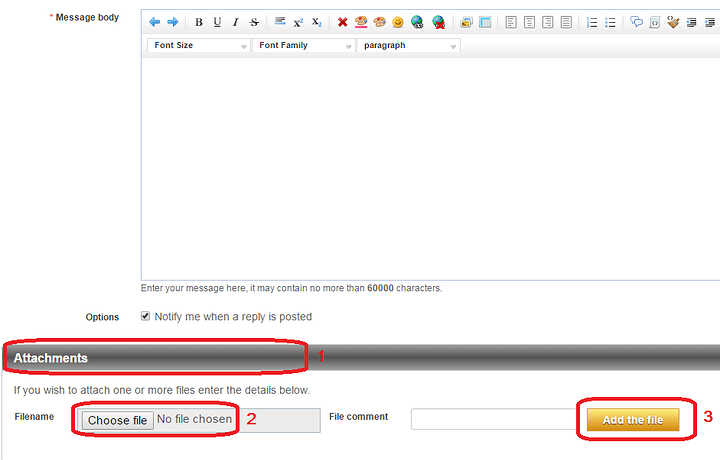I have an SSC-32 and I have been using it with multiple servos with great success for several years. In a recent application, I address it serially from my Windows 10 laptop using a C# Windows Form Application I wrote, and I find that with only one servo plugged in, it often (but not always) moves the servo in a grinding, jerky kind of way. It gets there, but it is anything but smooth. Commands are to only one servo position, calling for rotation in the 1250 to 1750 range and use global timing “T” character in a range from 2 to 25 seconds (2000 to 15000). If I plug in a second servo in any position, even if I do not address it, the first servo consistently behaves normally. What’s Up?
Pete
Hi,
Please reply with more details concerning your setup, including pictures showing all the components (the SSC-32, jumpers, wires, power cables, the 2 servomotor connections, etc).
See the attached image for details on how to attach pictures to your reply (using Full editor mode).
The jerkiness of the servomotor is likely caused by noise in the DC voltage going to the servomotors. Adding the 2nd servomotor probably fixes that by increasing the load on the power supply (and indirectly stabilizing its output).
Does this happen if you try other servomotors (only one servomotor at a time)? Is it better or worse with other servomotors?
Sincerely,
Sébastien,
Thank you for the prompt reply. I am sure you are right - this is undoubtedly a power supply loading issue. I can just leave the second servo attached and things work fine. However, this is not the most elegant of solutions. As a permanent fix I’d like to attach a dummy load. I tried a small 12 volt auto bulb, but that did not do it. Perhaps I need a power resistor. What resistance and wattage would you recommend? Perhaps I should also mention that I am using the same power supply to power the logic using the jumper closure designed for that purpose.
Thanks again,
Pete.
Hi,
Concerning power, we recommend that you check out the SSC-32U manual (page 15). This section contains information related to powering the SSC-32U electronics and servomotors.
About the dummy load, a resistive load may not do the job by itself. The secondary (unpowered) servomotor will probably provide capacitance and inductance by being connected which does more than just provide a current path with resistance.
A good idea would be to use an oscilloscope and compare the VS pin with respect to ground in both situations (1 servomotor vs 2 servomotors) to see what differences are noticeable.
Also, did you try your SSC-32U in the “one servomotor” setup with different ones to see if the results are similar/issue still present?
Sincerely,
Sébastien,
Thanks again for the help. Yes, I did try several small servo motors in the one-servo set up, and they all exhibited the same jerky response until a second motor as plugged in. I am using a “wall wart” type adapter (6 volts - 2A) as power. With two servos plugged in, I measure 6.3+ volts across any unused servo power pins. I think this is the power supply that came with the unit. As I mentioned, I have the unit in the VL=VS jumper position.
I think that I will just leave the second servo plugged in for now. For the next year or so my application will only call for one servo, but I do plan to expand n the future. That is why I am using the SSC32. So I’m good. I just wanted to understand what was going on. I have had these power supply loading problems before, so I understand a little of what is involved. Generally a light bulb does the trick, but clearly this is a more complex circuit that the ones I have heretofore worked on.
Thanks again,
Pete


